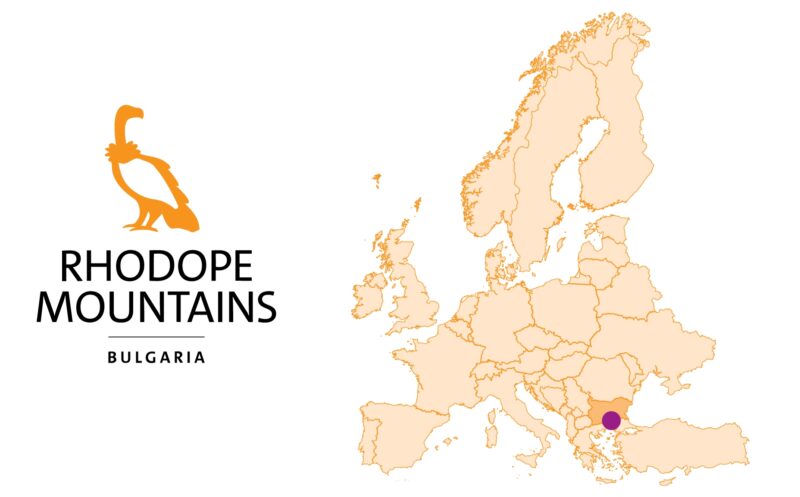In the Rhodope Mountains, agricultural subsidies are promoting the intensification of grazing, which is negatively impacting nature and local rewilding efforts. The local team are determined to keep advocating rural policies that allow people to make better use of the socio-economic benefits that rewilding can provide.
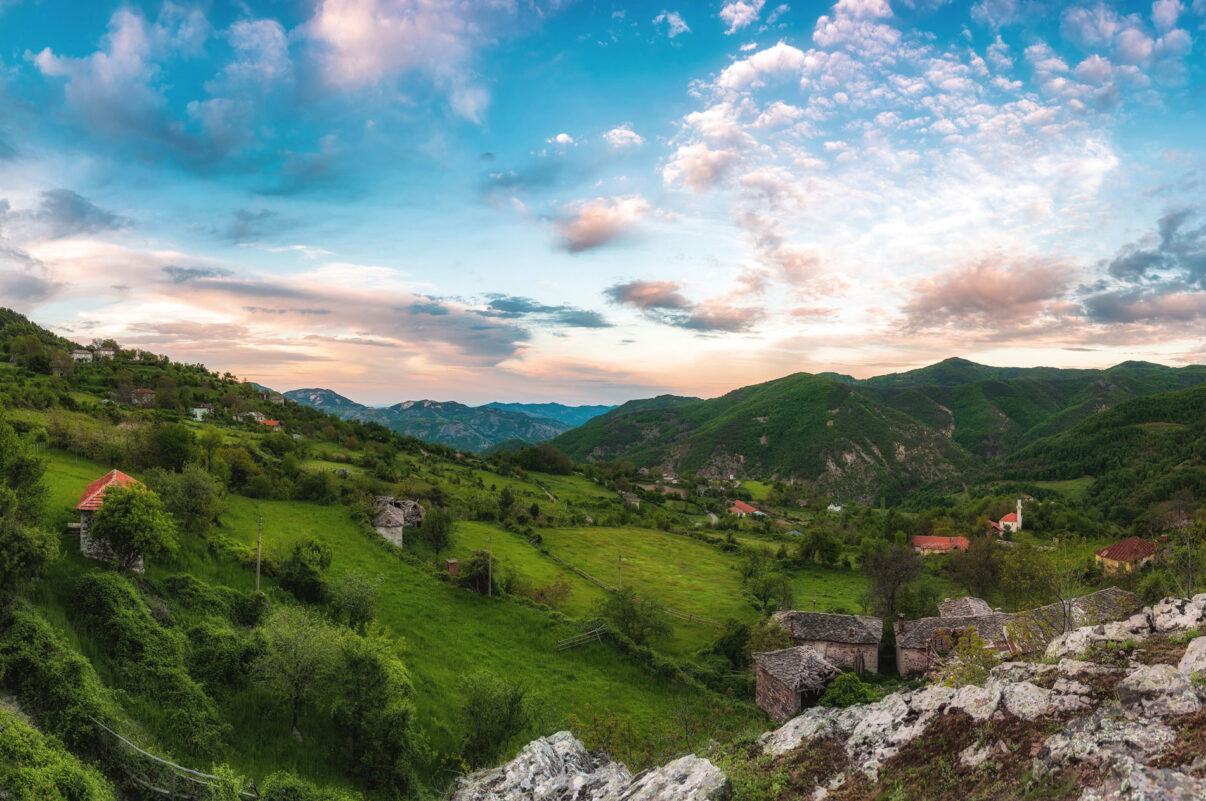
A rich and varied landscape
The sparsely populated Eastern Rhodope Mountains of southeast Bulgaria are one of Europe’s great biodiversity hotspots. Thanks to the varied and pristine nature of the region’s habitats, minimal human disturbance, and a strategic location between Europe and Asia, the Rhodope Mountains are home to an astonishing number of plant and animal species. Of the 38 European birds of prey, 36 species can be seen here, while even the brown bear, absent for many decades, is staging a comeback.
Perverse subsidies
One of the key ecological processes supporting the great biodiversity of the Rhodope Mountains is extensive livestock grazing, which has always been the main land use in the region. While most of the area’s wild grazers have long since disappeared, domesticated livestock have acted as their proxies for centuries, helping to maintain the area’s nature-rich mosaic landscapes.
“Most of the herds are small, between 100 and 200 cows, and the cattle within them have assumed the ecological role of natural grazers in the landscape,” explains rewilding officer Hristo Hristov. “Herds have defined social structures and are free-roaming for most of the year. As a result of wolf predation, they are also an important part of the circle of life, which supports scavenging species such as vultures.”
Today, however, a worrying trend is playing out. The European Union’s Common Agricultural Policy (CAP) is supporting the steady intensification of local livestock farming, which is leading to the degradation of the land and the wild nature it supports.
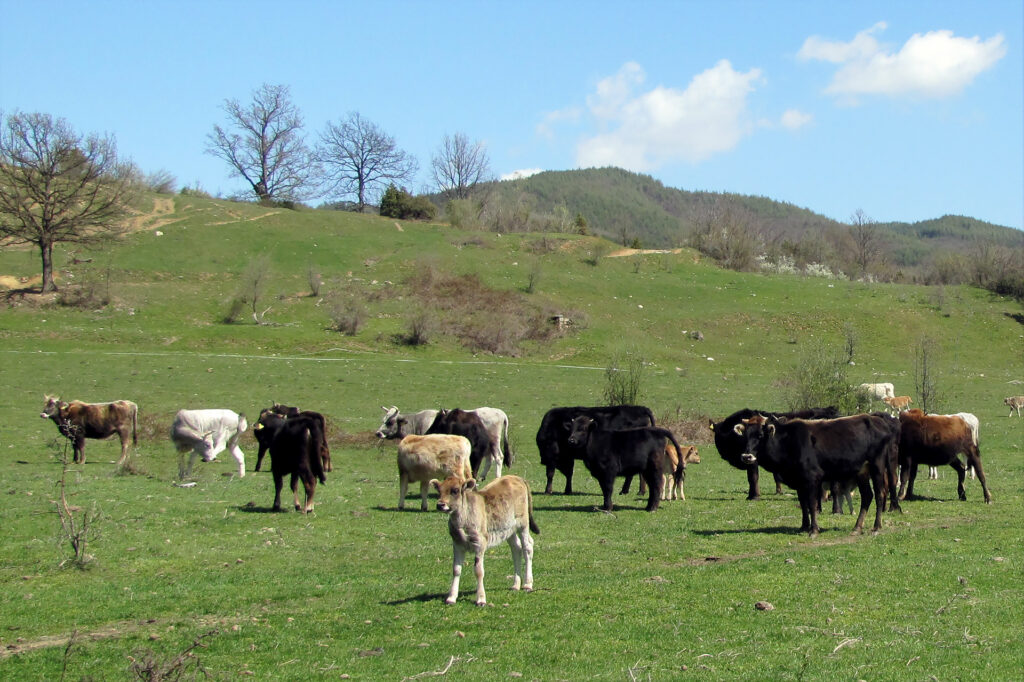
A skewed system
In Europe, as in many other parts of the world, intensive livestock farming exerts unsustainable pressure on the land, leading to biodiversity decline and severe environmental pollution, as well as significant greenhouse gas emissions and negative impacts on human health. Intensive livestock rearing systems are also driving antimicrobial resistance and have been linked to a higher risk of zoonotic diseases (diseases transferred from animals to humans).
Unfortunately, the CAP – a complex system of agricultural subsidies and other programmes accounting for over 350 billion euros, or around one-third, of the entire 2021–2027 EU budget – is failing to provide enough support for those engaged in extensive grazing, overlooking a whole range of environmental and socio-economic factors. In 2018, for example, 82 per cent of Bulgarian beneficiaries received less than 18 percent of CAP subsidies, with many of the smallest farmers remaining outside the CAP system altogether. The current design of the policy, which allocates subsidies mainly per unit of land cultivated or managed has seen many high-biodiversity areas of mosaic landscape in Bulgaria ploughed into arable fields.
“These subsidies create financial incentives for people to raise more and more livestock,” says Hristo Hristov. “This level of grazing leads to degradation of the land and the wild nature it supports in many ways. It’s fair to say subsidy-based pressure is a clear and present danger to biodiversity in the Rhodopes.”
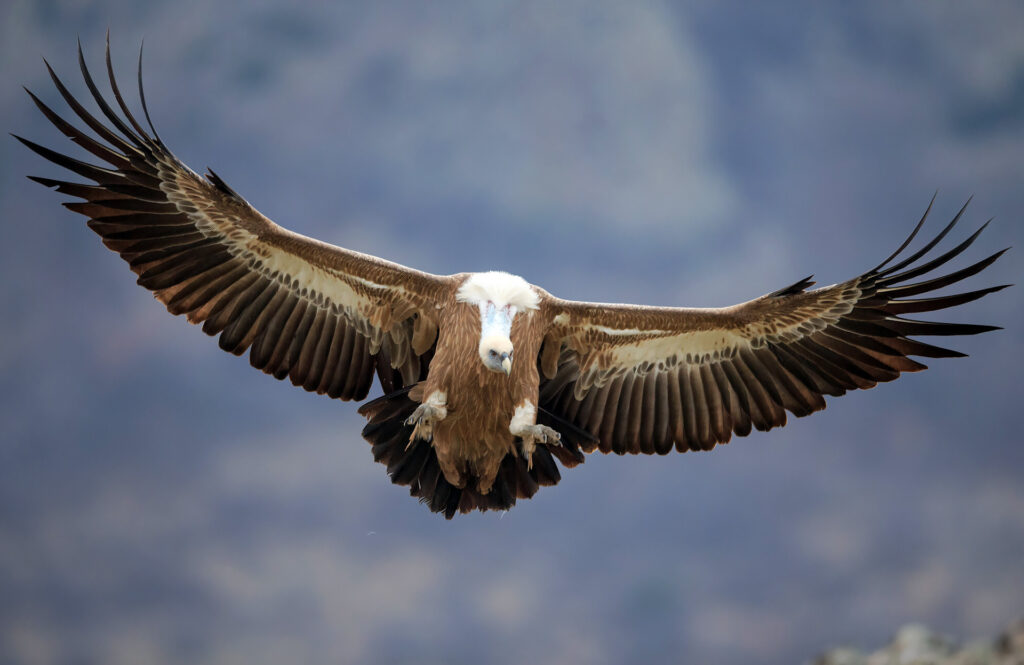
Impact on rewilding
In 2020, a new way of evaluating rewilding progress – developed by Rewilding Europe in collaboration with a range of partners – was applied across seven of our rewilding landscapes. While five of our landscapes generated a positive rating, the Rhodope Mountains registered a score of -13%. A major contributor to the negative outcome of the assessment are the subsidies of the CAP.
Rural policies may need to be better targeted to allow people to make better use of the socio-economic benefits that rewilding can provide. Recommendations for how the CAP could be amended already exist. A report produced through the three-year, Rewilding Europe-coordinated GrazeLIFE initiative (2018–2021), which considered the Rhodope Mountains as one of its study areas, outlined how European policies – particularly the CAP – could better support extensive grazing. The initiative was funded through the EU’s LIFE programme and carried out at the request of the European Commission.
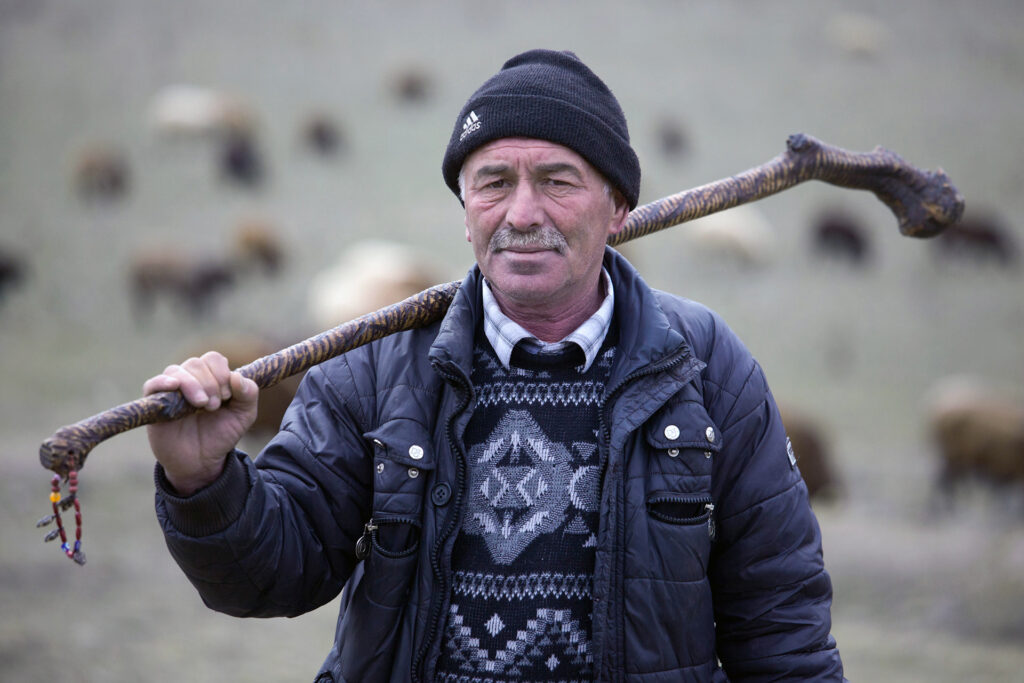
Hope for the future
Farms with livestock that are extensively grazed represent modern, multifunctional agriculture because they provide numerous public goods at low cost. They make a valuable contribution to effectively tackling the European challenges of protecting and enhancing biodiversity and minimising the impact and scale of climate change.
Recognising these benefits, for the Rewilding Rhodopes team, they are determined to keep championing extensive grazing. Over the last 15 years there have been multiple meetings with the government, and the team will continue to lobby.
“We do the best that we can with regard to nature, but I would love to see subsidies working here that actually help us.”
Izetin Sali
Livestock breeder in the Rhodope Mountains
Hristo Hristov takes heart from the fact that many farmers engaged in extensive farming in the Rhodopes are very knowledgeable and still want to protect nature in their own way. Izetin Sali, for example, is a 59 year-old livestock breeder who owns around 70 Rhodope shorthorn cattle.
“My animals are free – there are no fences,” he explains. “They know where to graze, where to find the best grass throughout the year, and the best water. They live alongside deer, wild horses, and European bison. I lose two or three cattle to wolves annually, but generally they know how to protect themselves.
“I take CAP subsidies for animals, which meant I had to build a stable, but the animals never go inside it. I don’t accept subsidies for pastures, because I would have to clear them, which is bad for animals such as birds, tortoises and lizards. We do the best that we can with regard to nature, but I would love to see subsidies working here that actually help us.”
Want to know more?
This blog is taken from a longer story entitled “The subsidy challenge”, which is featured in the Rewilding Europe Annual Review 2022.
Download a PDF of the story Or check out our Annual Review 2022

